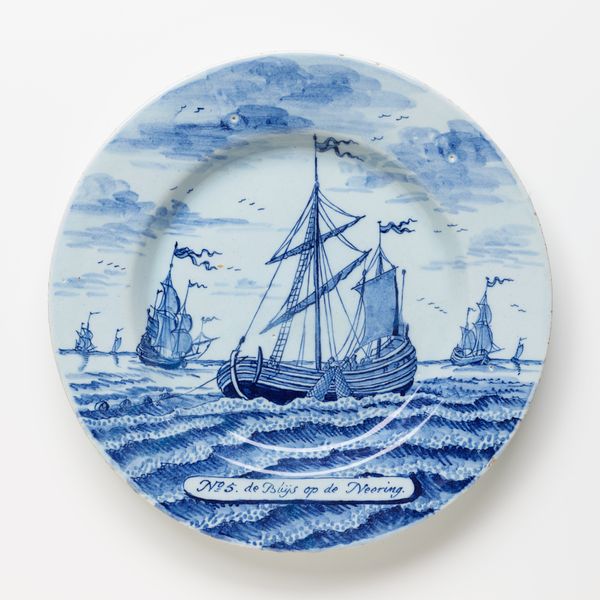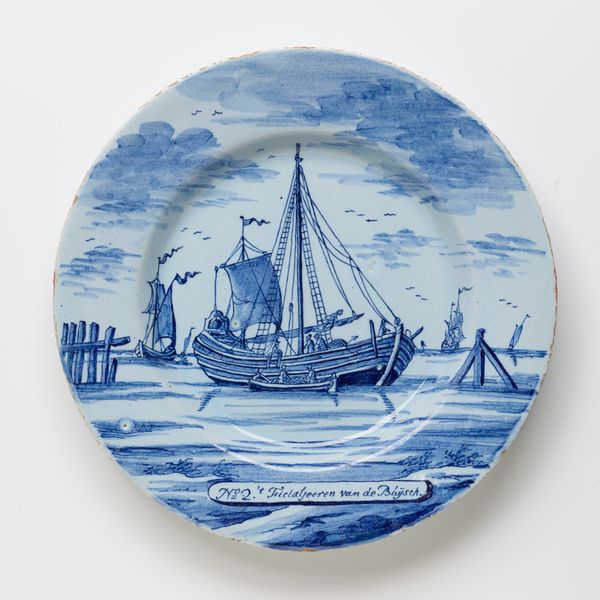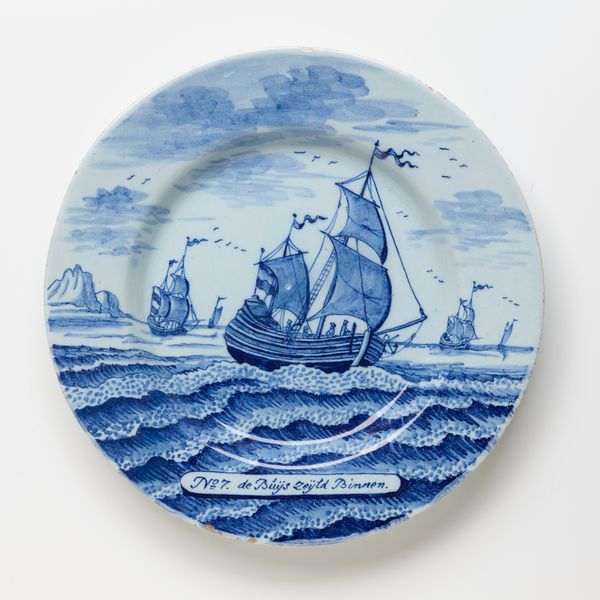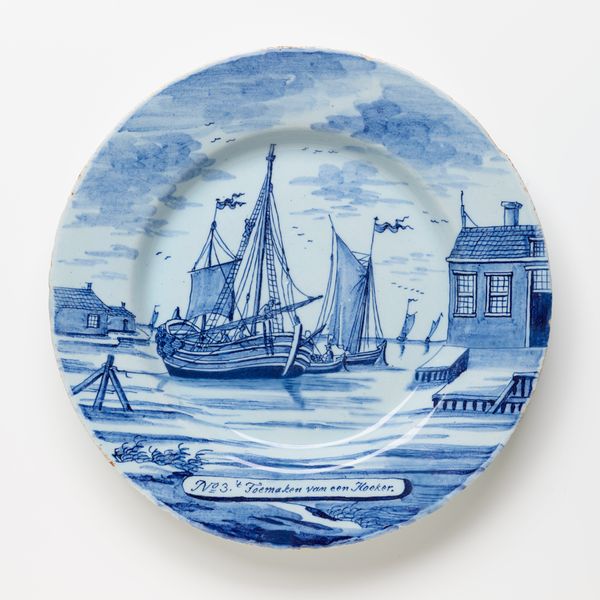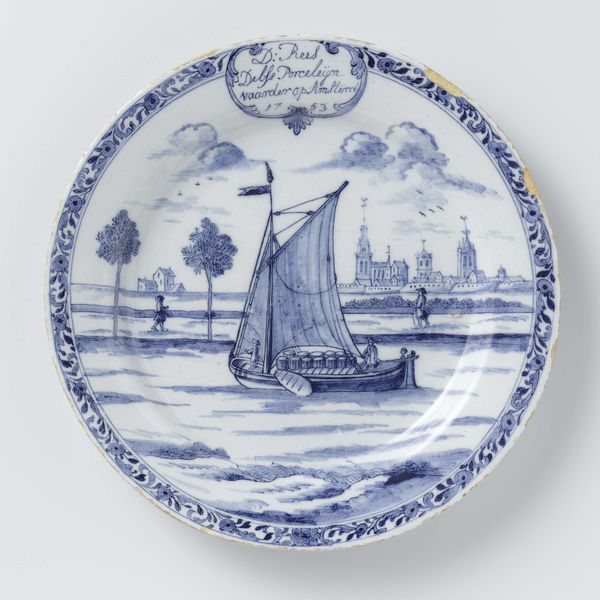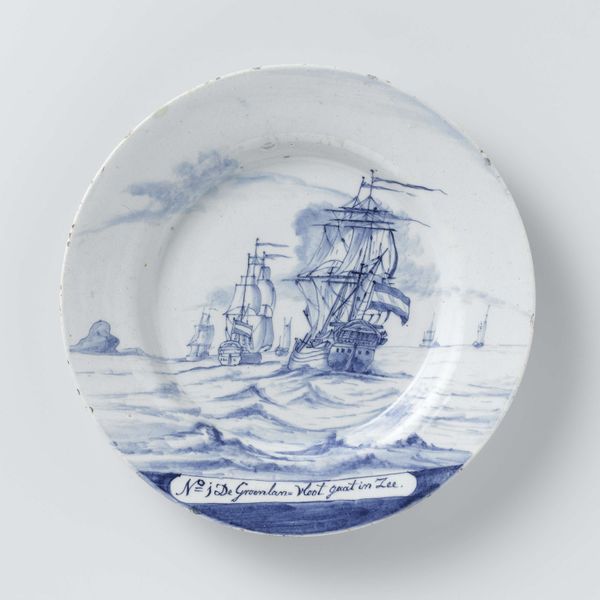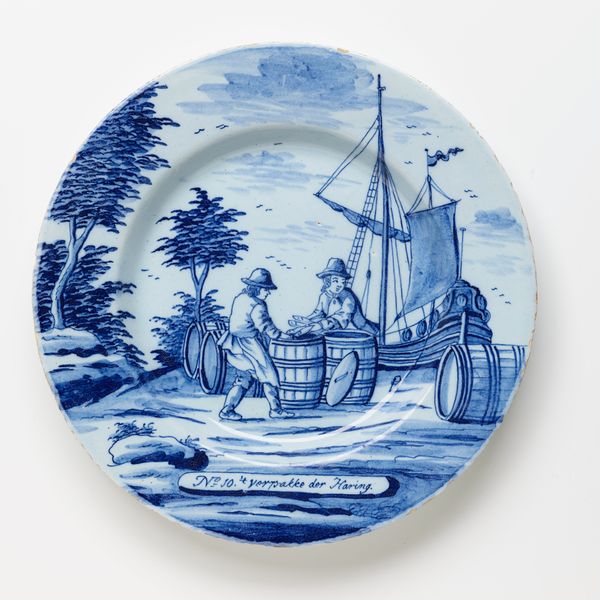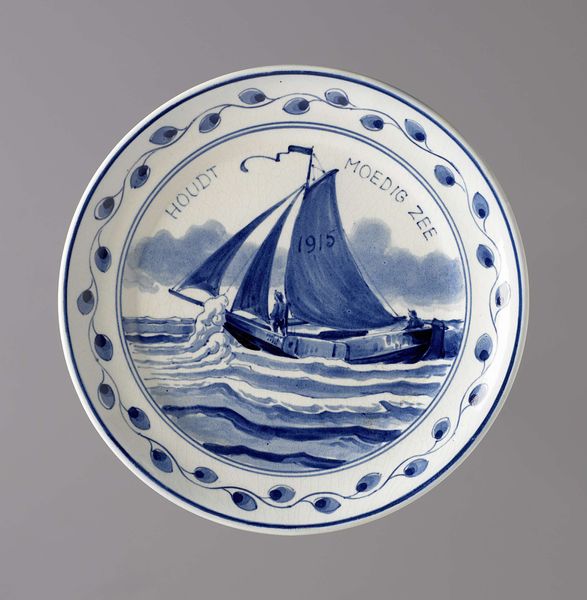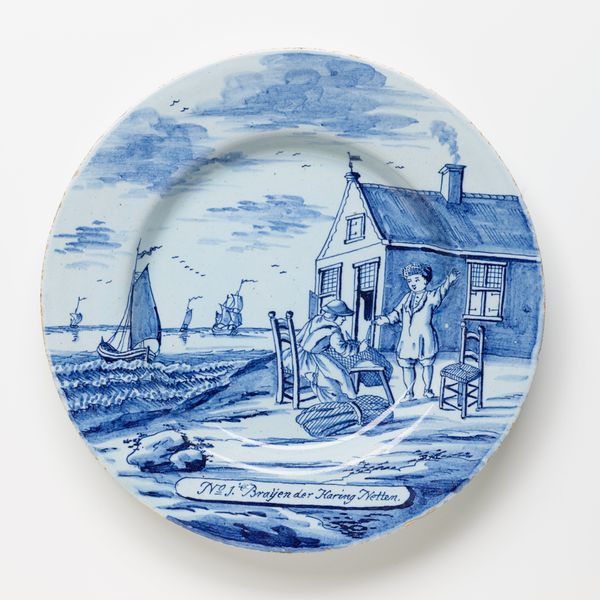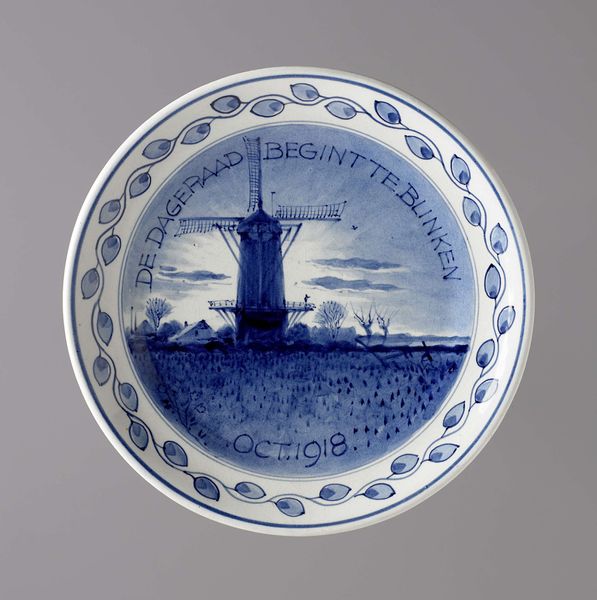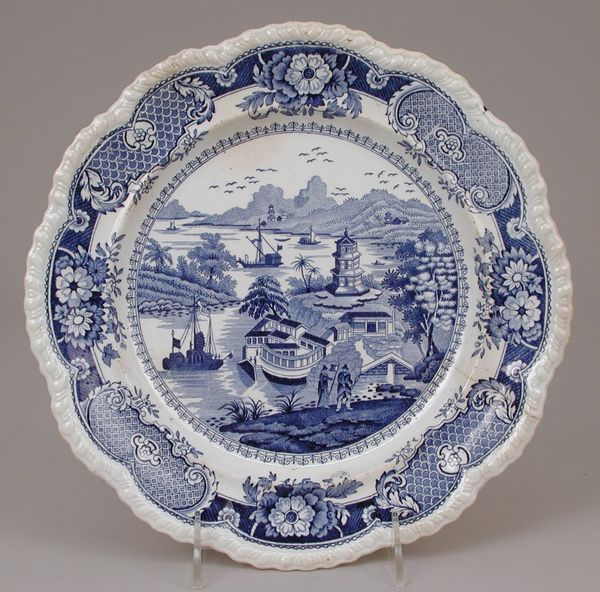
print, ceramic
#
dutch-golden-age
# print
#
asian-art
#
ceramic
#
naive art
Dimensions: 1 × 9 × 9 in. (2.54 × 22.86 × 22.86 cm)
Copyright: Public Domain
Curator: This object, titled "No. 6," created around 1780 by the Porcelain Axe (Porceleyne Bijl) Factory, is a ceramic plate that really caught my eye. There’s something so immediate about the painted scene – a fleet of ships braving a rather lively sea. How do you read it? Editor: It’s lovely! It has a simple, almost folk-art quality despite the complexity of the ships. What intrigues me is that it’s a functional object with an artistic scene painted on it. I am interested in the intended purpose, could this merge of art and craft hint to something bigger? Curator: Exactly. Let’s consider Delftware itself – the tin-glazed pottery produced in the Netherlands during this period. Its very existence speaks to a global network of trade and material exchange. The Dutch potters were, in essence, trying to imitate Chinese porcelain, a highly desirable, luxury commodity. What does it say about labour that cheapness can meet such artistry? Editor: That's a really interesting point. So, the plate’s visual style, that blue and white, that's almost like a mimicry? A sort of accessible alternative? Curator: Precisely! And what's being depicted on the plate is directly tied to the Dutch economy and social structure. These ships aren’t just any ships; they're likely merchant vessels. The waves, churned by the working ships that made it into being. How much do you think such plates would cost in contrast to the voyages of discovery? Editor: I hadn’t considered that economic angle at all. The ships being symbols of commerce underscores that the creation, and the consumption, are tied to larger systems of power and exchange. It gives a new layer to this seemingly naive work. Curator: Right, and by examining its materiality, it exposes those social conditions and relations, beyond what the image alone might convey. Editor: This makes me consider other ‘craft’ objects and how their creation, use, and accessibility relates to social structures. I've come away looking for that balance between social consciousness and artistic freedom. Curator: Agreed, viewing this as more than 'just' decorative changes everything. The materiality opens into socio-economic reality.
Comments
minneapolisinstituteofart about 2 years ago
⋮
This series of twelve plates is painted with scenes related to fishing for herring. While undistinguished in appearance, this silver fish was an abundant source of food in the North Sea and supported a vast fishing industry in the Netherlands. Herring fishing accounted for such a large percentage of the wealth of the Dutch Republic that Amsterdam was said to have been built on herring bones.
Join the conversation
Join millions of artists and users on Artera today and experience the ultimate creative platform.

